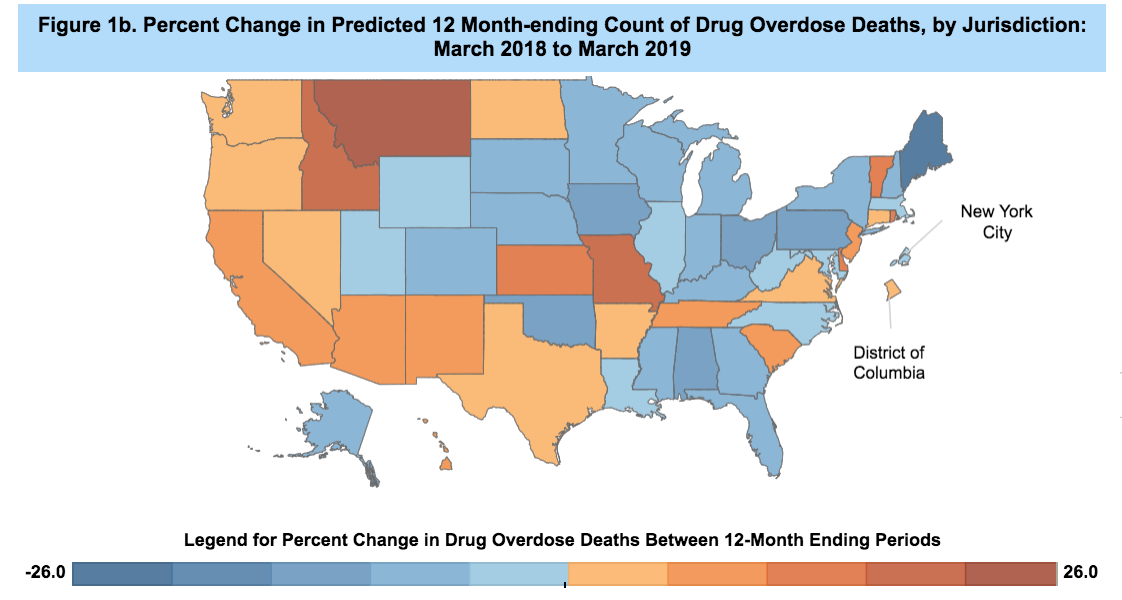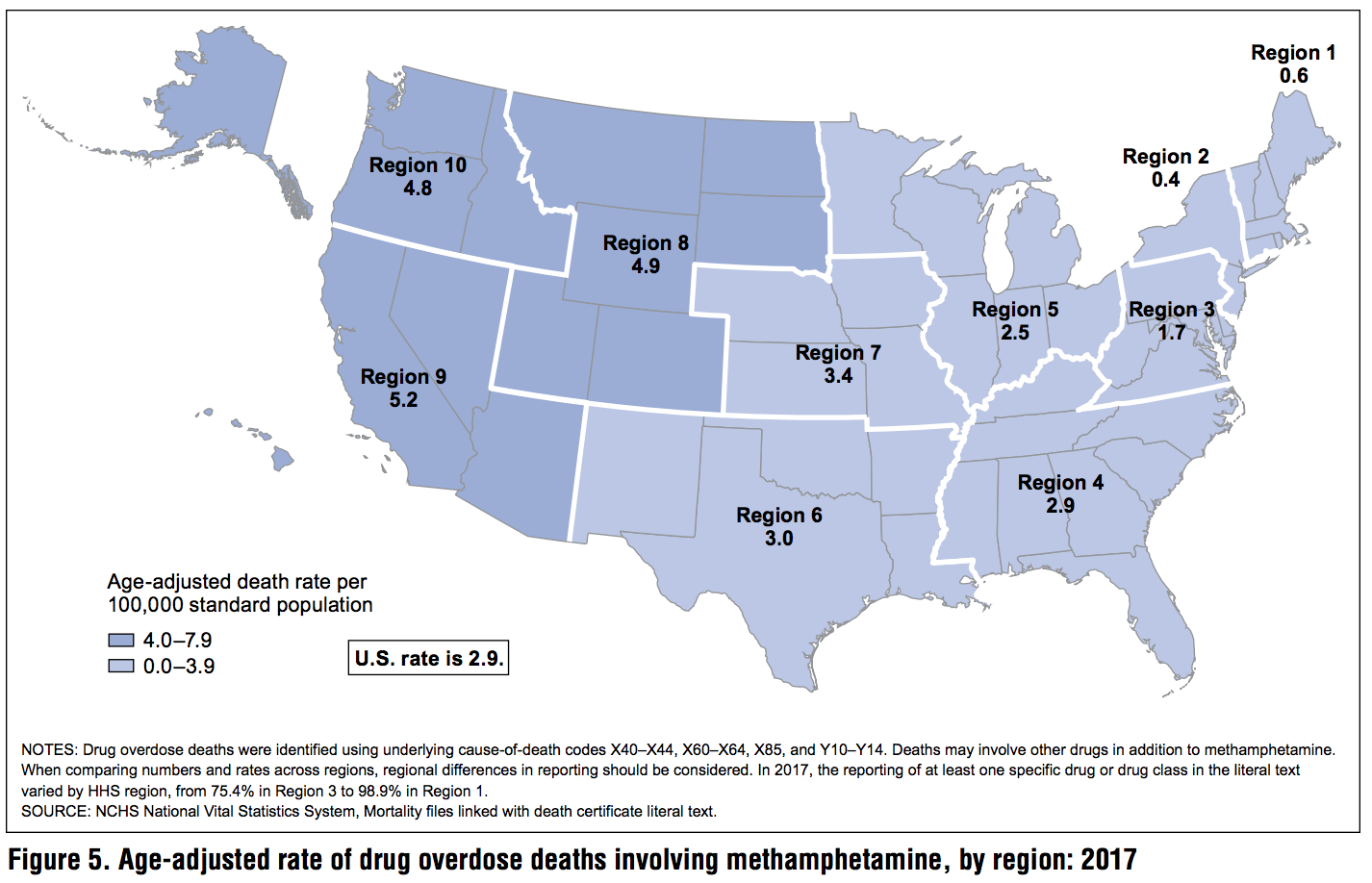In July 2019, the Center for Disease Control and Prevention (CDC) released preliminary data suggesting that national overdose deaths slightly declined in 2018 for the first time in 20 years. But on a state-by-state level, that’s not the case.
While the parts of the United States with the highest rates of opioid-involved deaths, like Appalachia, are seeing overall drops in fatalities, the western part of the country is seeing an escalating crisis.
Source: CDC
Researchers have suspected that methamphetamine has been involved in growing numbers of deaths in these regions, but because of the drug’s inclusion in broad data categories, like “psychostimulants with the potential for abuse,” they’ve had difficulty proving it.
A new report by the CDC was able to get around this issue. The researchers behind a study published on October 25, 2019 circumvented the usual roadblocks to identifying the exact drug, or drugs, determined to be involved in deaths by using a “literal text search” of death certificates for the specific mention of certain drugs.
Their research indicates that meth, specifically, was involved in around one-third of all drug-related deaths in western states in 2017. Using regions defined by the Department of Health and Human Services Regions to locate deaths, the researchers found that Region 9, a group of states including California, Nevada, Arizona, and Hawaii, saw 2,741 meth-involved deaths that year, involved in 37 percent of all drug fatalities across the four states.
In contrast, heroin was involved in 16 percent of drug-involved deaths in the area. The deaths across these states occurred occurred at a rate of a 5.2 per 100,000 people, with a higher meth-involved death rate than in any other HHS region—though the fentanyl-involved death rate was still far higher.
Source: CDC
The findings are important but not necessarily groundbreaking. The report notes that the stark contrast between the western United States and the Northeast, for example, has been shown elsewhere. In 2017, methamphetamine was far more likely to be involved in seizures among folks in the West census region (46 percent) versus the Northeast census region (2 percent).
Media outlets are now beginning to ring the alarm bells about the role of meth use in driving fatalities. But public officials’ albeit-understandable preoccupation with opioid-involved deaths has long veiled this issue.
The CDC data, once more, underscores how myopically focusing on the harms of one drug can allow the harms associated with another to swell.
Photograph of a “Welcome to California” sign on the California-Nevada state border; by Famartin via Wikimedia Commons







Show Comments